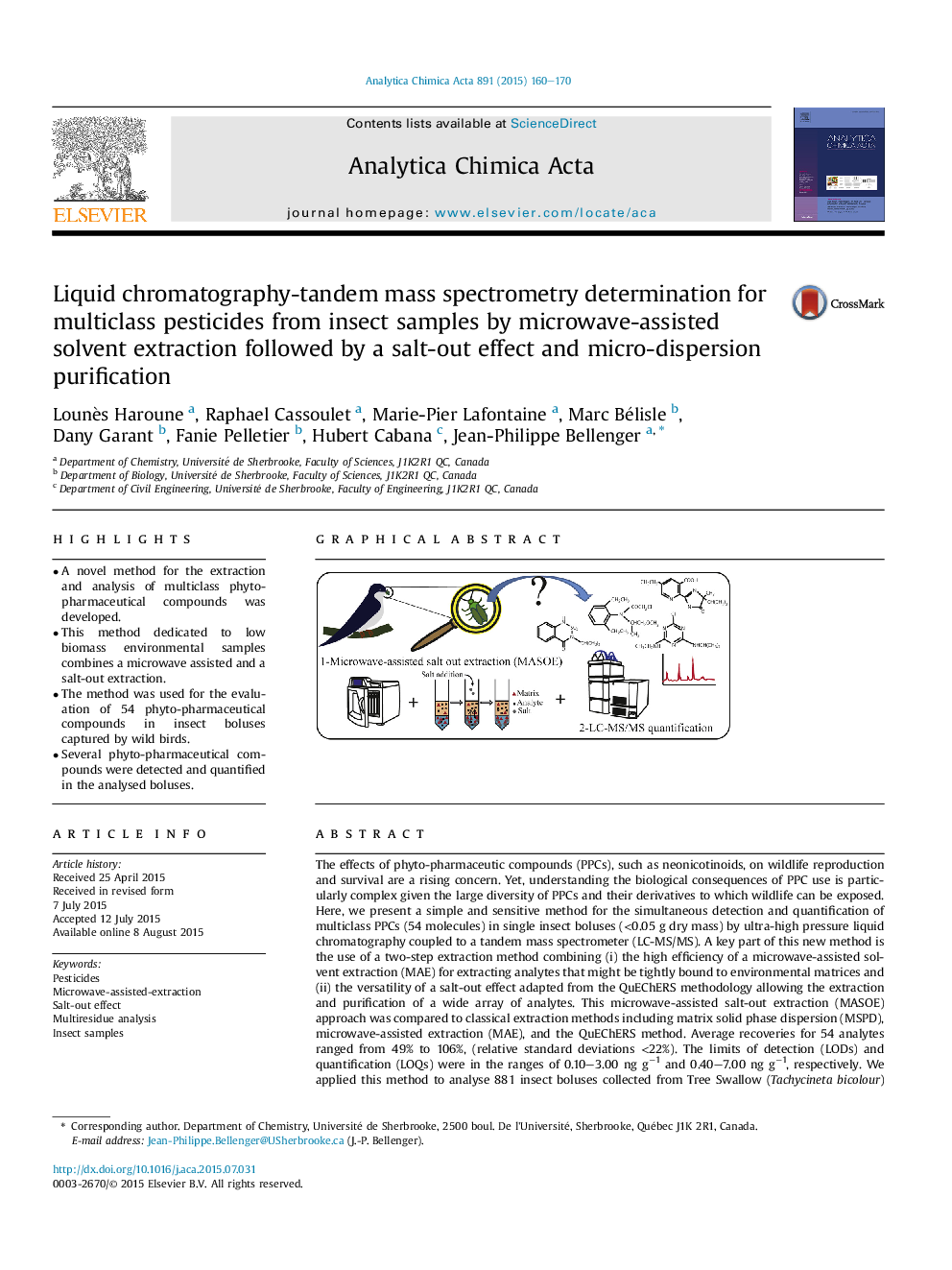| Article ID | Journal | Published Year | Pages | File Type |
|---|---|---|---|---|
| 1163395 | Analytica Chimica Acta | 2015 | 11 Pages |
•A novel method for the extraction and analysis of multiclass phyto-pharmaceutical compounds was developed.•This method dedicated to low biomass environmental samples combines a microwave assisted and a salt-out extraction.•The method was used for the evaluation of 54 phyto-pharmaceutical compounds in insect boluses captured by wild birds.•Several phyto-pharmaceutical compounds were detected and quantified in the analysed boluses.
The effects of phyto-pharmaceutic compounds (PPCs), such as neonicotinoids, on wildlife reproduction and survival are a rising concern. Yet, understanding the biological consequences of PPC use is particularly complex given the large diversity of PPCs and their derivatives to which wildlife can be exposed. Here, we present a simple and sensitive method for the simultaneous detection and quantification of multiclass PPCs (54 molecules) in single insect boluses (<0.05 g dry mass) by ultra-high pressure liquid chromatography coupled to a tandem mass spectrometer (LC-MS/MS). A key part of this new method is the use of a two-step extraction method combining (i) the high efficiency of a microwave-assisted solvent extraction (MAE) for extracting analytes that might be tightly bound to environmental matrices and (ii) the versatility of a salt-out effect adapted from the QuEChERS methodology allowing the extraction and purification of a wide array of analytes. This microwave-assisted salt-out extraction (MASOE) approach was compared to classical extraction methods including matrix solid phase dispersion (MSPD), microwave-assisted extraction (MAE), and the QuEChERS method. Average recoveries for 54 analytes ranged from 49% to 106%, (relative standard deviations <22%). The limits of detection (LODs) and quantification (LOQs) were in the ranges of 0.10–3.00 ng g−1 and 0.40–7.00 ng g−1, respectively. We applied this method to analyse 881 insect boluses collected from Tree Swallow (Tachycineta bicolour) nestlings along an agricultural intensification gradient in southern Québec (Canada). We detected 25 PPCs out of the 54 considered. We detected at least one PPC in 30% of samples and were able to quantify at least one of them in 17% of samples. Our study shows that the MASOE method should prove to be a powerful tool for studying the fate and impacts of PPCs on wildlife.
Graphical abstractFigure optionsDownload full-size imageDownload as PowerPoint slide
